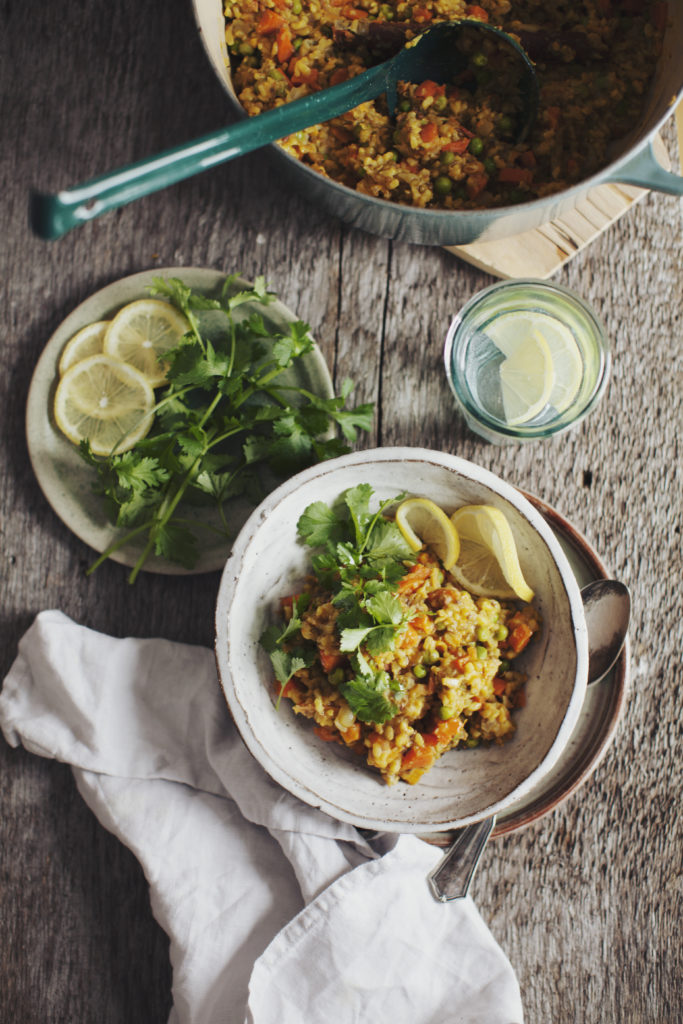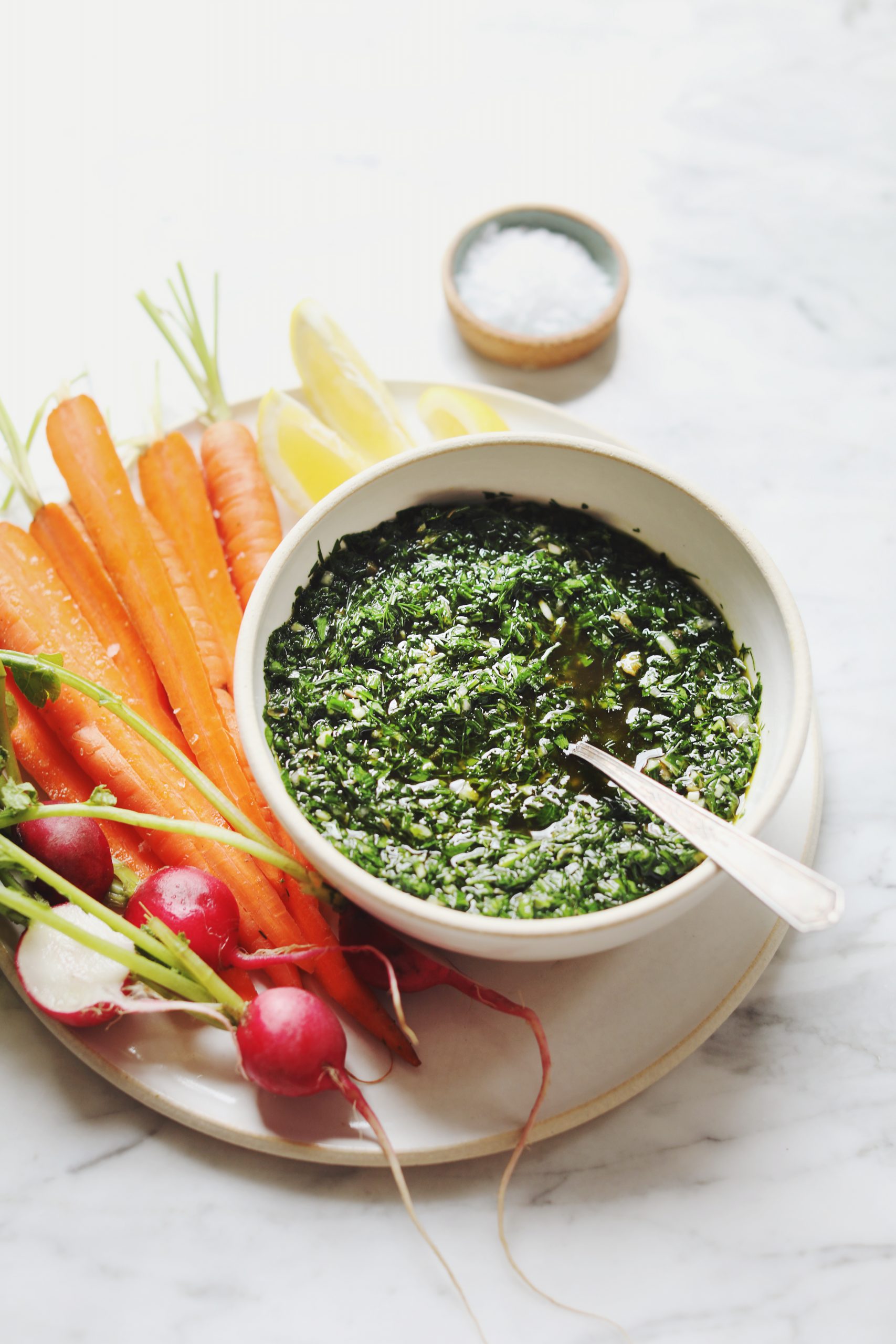Kichadi, sometimes called and spelled khichdi, kitchari, kitcheree or khichri, is the famous one-pot wonder Indian dish that combines rice and lentils or quick-cooking pulses or legumes, such as mung beans. Its best known in Ayurvedic tradition as a cleansing and complete protein meal, very easy to digest, and a cinch to make! It is delicious, super comfort food, and even if you’re not down with eating the exact same thing for every meal for several days in a row, you’ll be thrilled to learn it’s also the perfect thing to tuck into on a cold winter night.
Because of its simplicity and ease, many people find that doing a kichadi “mono-diet” is very pleasant and far less of an ordeal than a juice fast for example (although I need to be clear that a juice fast is far deeper and more effective). Taking three to seven days to eat this dish exclusively gives the digestive organs a serious break since kichadi is very easy to break down and assimilate. And because digestion is at the core of human health, putting a practice in place that supports this essential process makes room for the miracle of self-healing: something the body is constantly striving for, but often distracted from by poor dietary and lifestyle choices. When we forgo processed foods, alcohol, caffeine, and common allergens for a few days, we give our bodies the space it needs to do what it naturally does anyway: clean itself up!
I like to eat a kichadi diet in the colder months when the weather is unfriendly and I need some reassuring, grounding, warm food – and juicing sounds about as fun as a hole in the head. It’s also a wonderful way to glide yourself into the process of cleansing if you’ve never tried it before. Since it doesn’t involve abstaining from food, most first-timers find it totally do-able, and dare I say it, enjoyable! I’ve just completed three days of eating kichadi for breakfast, lunch, and dinner, and I’m feeling sooo much more balanced, clear-headed, and energized – the ways I would like to feel at the beginning of a brand new year! I hope that this simple and realistic reset is up your alley, and that you give it a go.
For more about kichadi, head to My New Roots!
Simple and Cleansing Kichadi
Ingredients
- 1 Tbsp. coconut oil or ghee
- ½ Tbsp. cumin seeds
- ½ Tbsp. mustard seeds
- ½ Tbsp. coriander seeds
- ½ tsp. ground turmeric
- 1 cinnamon stick
- 1-2 Tbsp. minced ginger to taste
- 1 large tomato chopped (optional)
- 2 medium yellow onion diced
- 2 medium carrots chopped
- 1 small / 250g sweet potato or other seasonal root veggie, chopped
- 1 cup / 200g brown rice
- ½ cup / 110g mung beans or brown lentils
- 1 tsp. fine grain sea salt
- 1 cup / 140g green peas frozen or fresh
- 4 cups / 1L water or more, as needed
- a couple handfuls finely chopped cilantro
- lemon to garnish
Directions
- If possible, soak the rice and pulses together overnight, or for 8-12 hours. Drain and rinse very well.
- Melt the oil in a large stockpot. Add the cumin and mustard seed and fry just until the mustard seeds start to pop. Add the remaining spices, stir and then add the tomato and ginger (if you’re opting out of the tomato, simply use a few splashes of water). Fry for a couple minutes until fragrant.
- Add the onion, carrots, sweet potato, brown rice, mung beans, salt, and water. Bring to a boil, reduce to simmer and cook for about 45 minutes, until the rice and beans are soft. About five minutes before serving, add the peas whether fresh or frozen, and cook until they are warm. Add more water for a stew-y consistency, or if the pot becomes dry while cooking.
- Serve kichadi hot, garnished with cilantro and a squeeze of fresh lemon juice. Give thanks and enjoy.
Notes




